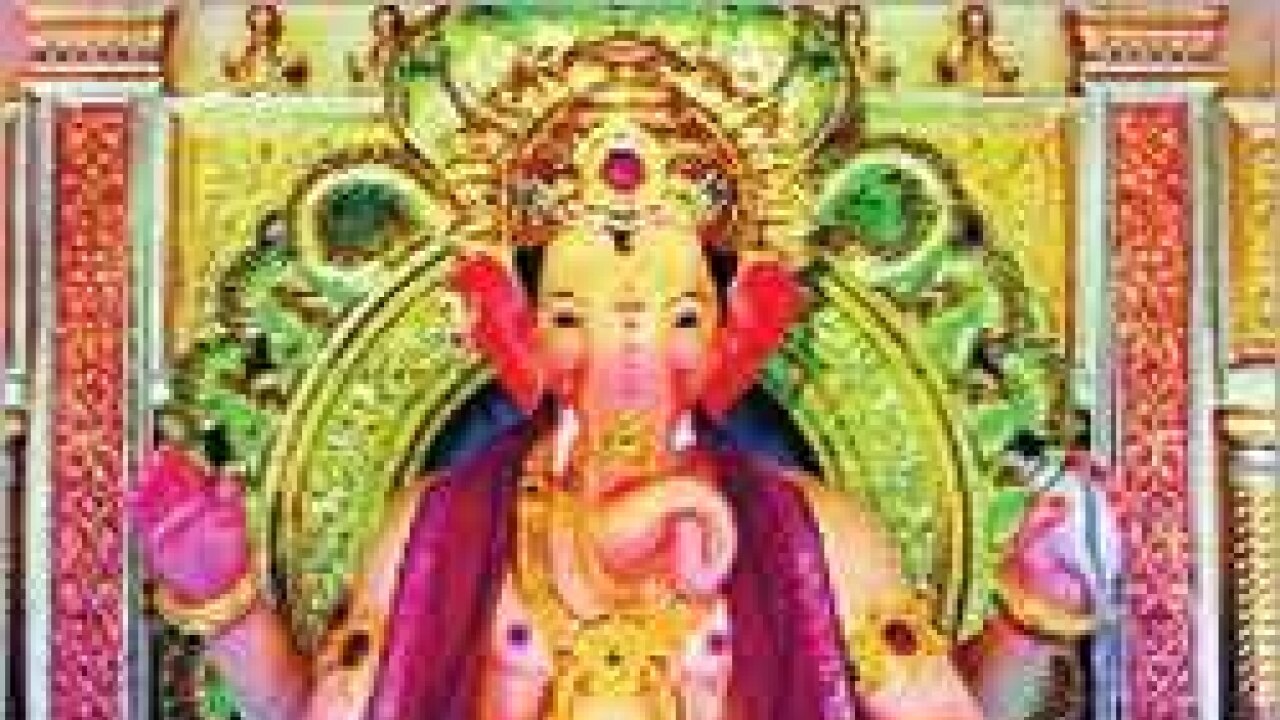
As Mumbai plays host to its favourite guest and complains about long queues for darshan, there are some who work day and night for these ten days. Speak Up visits Lalbaugcha Raja and profiles men behind the scenes who make the magic happen.
Donation counter: Subhash Sayle
"The overall collection last year was around Rs2.5 crore."
Working on a cash and donation counter is a hectic job you need to be alert all the time. You cannot let fatigue get to you, else you might err in calculations and sorting it out could take hours.
The day starts at 7 am and goes on till 2 in the night. We work on a rotation basis. We sometimes go without food mainly for want of time. The final counting is done after visarjan; this time it's on September 8. Last year's collection at this counter was Rs20 lakh and the overall collection was approximately Rs2.5 crore.
The donations are largely used for charity. Last year, we built 30 houses for the victims of the deluge. This year, we have already sanctioned Rs50 lakh towards healthcare.
Untying money garlands: Yashwant Mestri
"We often get garlands of Rs1,000 notes"
Unpinning and untying currency notes and coconut garlands takes enormous amount of time and patience. We start early in the morning and work late into the night. We work in shifts so that each of us can have some food and rest before resuming duties.
When untying currency notes, you have to be careful and do the job with precision to ensure that the notes don't tear.
These garlands have notes of all denominations— from Rs10 to Rs1,000 — and get about 150 such garlands through the 10 days.
The notes are then bundled and put in a box to be counted and banked after visarjan. The coconut garlands are also untied, packed in gunny bags and given away as prasad. During the 10-day period, about 5,000 gunny bags of coconuts are collected.
Man who drapes the Lord: Ramesh Pawar
"Changing the drape takes about 30 mins and is done without stopping darshan."
I am a tailor by profession and have been draping the Lord for the last 14 years. This Ganapati is dressed twice a day, at 3 am and 3 pm, and those who have their wishes fulfilled send the cloth.
People have to book a year in advance to have their cloth drape the lord as only 20 such offerings make it though Ganeshotsav.
The silk cloth that is used to drape Ganpati is 39 meters long. It is made of three 13-meter-long pieces sewn together. Changing the drape takes around 20 to 30 minutes and is done without stopping darshan.
We carefully cover the idol with the new drape after which the older one is slipped off from beneath. These clothes are auctioned after visarjan. Rs3000 was the highest bid received last year.
Idol maker: Santosh Kambli
"The Lalbaugcha Raja has a trademark flick across his forehead"
My father Ratnakar Kambli and grandfather have been making the idol of Lalbaugcha Raja since 1935. We start making the idol two months before Ganeshotsav and employ about 13 people to help us.
The Lalbaugcha Raja is special; the body is that of a normal human and the head is that of an elephant with a benevolent face. He also has a trademark flick of hair on his forehead. My father paints the eyes of the Lord, which is the most intricate and the most important detail of an idol.
The idol is always slightly side-profiled, as though overseeing his devotees. The mouse, mace and the gold feet of the Lord are made only by the jeweller who has designed ornaments for Siddhivinayak.
Announcer: Rajaram Salaskar
"People come looking for lost valuables, kids."
People often come to this counter with a problem and someone has to be there at all times. Most often, it's people looking for their lost valuables and sometimes kids.
We ask people to identify their valuables and hand it over only after thorough verification. The unclaimed articles are kept in a sealed box and deposited with the mandal. People also approach the counter to request announcements.
Security and CCTVs: Dinesh Bendkule
"More than 500 volunteers to ensure safety."
Security is the most important part of such public celebrations more so, after the recent incidents in city.
We have installed CCTVs around the area to monitor the crowd. We have hired professionals to monitor and diffuse any sensitive situation.
This, in addition to the security the police are providing. In addition to CCTVs, there are more than 500 volunteers ensuring a safe Ganeshotsav.
Men who manage the crowds: Ashok K/Shridhar S/Kishore Pawar
About a lakh of people visit this place every day. Some people are unruly and try to create a ruckus. In such situations, we request them with folded hands not to ruin the reputation of the Lord and the mandal. More than 1,100 volunteers manage the crowd. We try to ensure that the devotees in general queue get a darshan within two hours while the mannat queue takes about 10 hours. The infirm get immediate darshan.
(In 1893 the first sarvajanik Ganeshotsav was celebrated.)